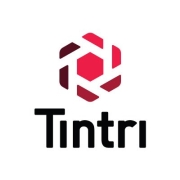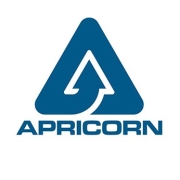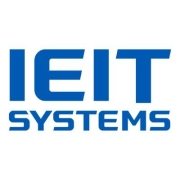All-Flash Storage solutions provide fast and reliable storage capabilities by using solid-state drives, catering to enterprises that demand high-speed data access and improved performance.
These storage systems are designed to eliminate the latency and reliability issues often associated with traditional HDD-based storage. They deliver consistent low-latency performance and are capable of handling demanding workloads, such as high-frequency trading, big data analytics, and large-scale virtualization.
What are the critical features of All-Flash Storage?Enterprises in finance, healthcare, and technology sectors implement All-Flash Storage to support critical applications like electronic medical records, financial transactions, and software development environments. It ensures quick access to large datasets, improving overall operational efficiency.
All-Flash Storage is helpful for organizations seeking to enhance their IT infrastructure's performance, reliability, and scalability, enabling them to better meet their business objectives and support growth. Efficient storage systems optimize both data access and management processes.

























































Also called all-flash arrays (AFA), all flash-data storage is a type of storage infrastructure that consists entirely of flash drives instead of spinning-disk or hard drives. All-flash is also called solid-state array (SSA).
The AFA enables organizations to have faster and better operations, performance, and agility for business applications. Some companies will mix flash and disk drives in a hybrid array, but this doesn’t give them the same benefits as replacing all hard disks with AFA.
One of AFA’s characteristics is that it includes native software services for data management and data protection in the array hardware. This saves users from having to purchase and install third-party management software to protect data.
Flash memory is often confused with solid-state disk (SSD) storage. However, they are not the same thing. A solid-state drive is any storage device without moving parts. Thus, flash is a type of SSD, but not every SSD is flash. Because people are familiar with flash USB drives, many users confuse the terms. An all-flash array (AFA) replaces the disk supporting input/output processes and storage.
SSDs use flash memory to ensure a high-speed when reading/writing data, reaching speeds of over 5GBs/s. To achieve this, they read or write multiple flash memory chips simultaneously, having between 4 and 16 channels to access flash storage.
Both technologies are based on solid-state chips, and thus considered solid-state storage. However, they are used differently in a computer system.
Flash memory is used for storing, reading, and writing data at high speeds.
RAM (random access memory) is the part of your computer memory that performs operations on the data retrieved from storage.
Both flash memory and RAM are faster than hard disk drives (HDD) because of their solid-state nature. RAM, however, is faster than flash. On the downside, it is also more expensive. It is also volatile, which means it cannot hold data when the power is down.
Regarding costs, there are two types of RAM used in computer systems: SRAM (static RAM) and DRAM (dynamic RAM). Static RAM is usually faster, but as such, much more expensive than DRAM. Therefore, organizations use SRAM for memory cache, and DRAM for operational memory for the operating system and applications.
Flash memory is less expensive than RAM and is non-volatile. Therefore, it can hold data without being connected to power. The downside of flash memory is that compared to RAM memory types, it is significantly slower. Organizations use flash in use cases that require reduced power consumption and persistent storage at a lower cost.
All-Flash Storage Arrays are high-performance storage systems that use SSDs instead of traditional HDDs.
- AFSAs are designed to provide faster data access, lower latency, and higher IOPS compared to HDD-based storage systems.
- AFSAs leverage NAND flash memory technology, allowing for faster data transfer rates and improved reliability.
- AFSAs typically consist of multiple SSDs organized in a RAID configuration to ensure data redundancy and protection against drive failures.
- AFSAs use advanced data management techniques such as wear leveling, garbage collection, and error correction codes to enhance the lifespan and reliability of the SSDs.
- AFSAs employ sophisticated data reduction technologies like compression and deduplication to optimize storage capacity utilization and reduce costs.
- AFSAs often incorporate advanced storage features like thin provisioning, snapshots, and replication to enable efficient data management and disaster recovery capabilities.
- AFSAs are typically connected to servers through high-speed storage protocols such as Fibre Channel, iSCSI, or NVMe over Fabrics to ensure low latency and high bandwidth.
- AFSAs can be integrated into existing storage infrastructures seamlessly, allowing organizations to leverage their existing investments while gaining the benefits of flash storage.
- AFSAs are commonly used in performance-critical applications such as databases, virtualization, analytics, and high-frequency trading, where fast and reliable data access is crucial.
- AFSAs can significantly improve application performance, reduce data center footprint, and lower power and cooling costs compared to traditional HDD-based storage systems.
- AFSAs are available in various form factors, including rack-mounted arrays, blade systems, and hyper-converged infrastructure, to cater to different deployment requirements.
- AFSAs are often managed through intuitive GUIs or CLIs that provide administrators with centralized control and monitoring capabilities.
- AFSAs are evolving rapidly, with advancements in SSD technology, storage protocols, and software-defined storage, enabling even higher performance and scalability in the future.
All-Flash Storage significantly improves performance by providing faster data access times compared to traditional hard drives. This results in reduced latency, quicker application response times, and enhanced overall system efficiency. For high-demand applications like databases and virtual desktop infrastructures, this performance boost can be critical.
What are the cost benefits of All-Flash Storage?While the initial investment for All-Flash Storage can be higher, it offers substantial cost benefits in the long run. Savings come from reduced energy consumption, lower cooling requirements, and minimized maintenance costs. Additionally, the enhanced performance can lead to higher productivity and better utilization of resources.
How does All-Flash Storage enhance data security?All-Flash Storage enhances data security through built-in features like encryption, data replication, and snapshots. These technologies help protect sensitive information from unauthorized access and data loss. The reliable performance and endurance of flash storage also contribute to data integrity and availability.
What industries benefit most from All-Flash Storage?Industries such as finance, healthcare, e-commerce, and technology benefit most from All-Flash Storage due to their high data throughput and low latency requirements. These sectors often rely on real-time data processing and analytics, making the speed and efficiency of All-Flash Storage crucial to their operations.
How does All-Flash Storage impact scalability?All-Flash Storage impacts scalability by providing a flexible and resilient architecture that can easily adapt to growing data demands. This storage solution can handle large volumes of data and accommodate sudden spikes in demand, ensuring that your infrastructure can scale efficiently without compromising performance.